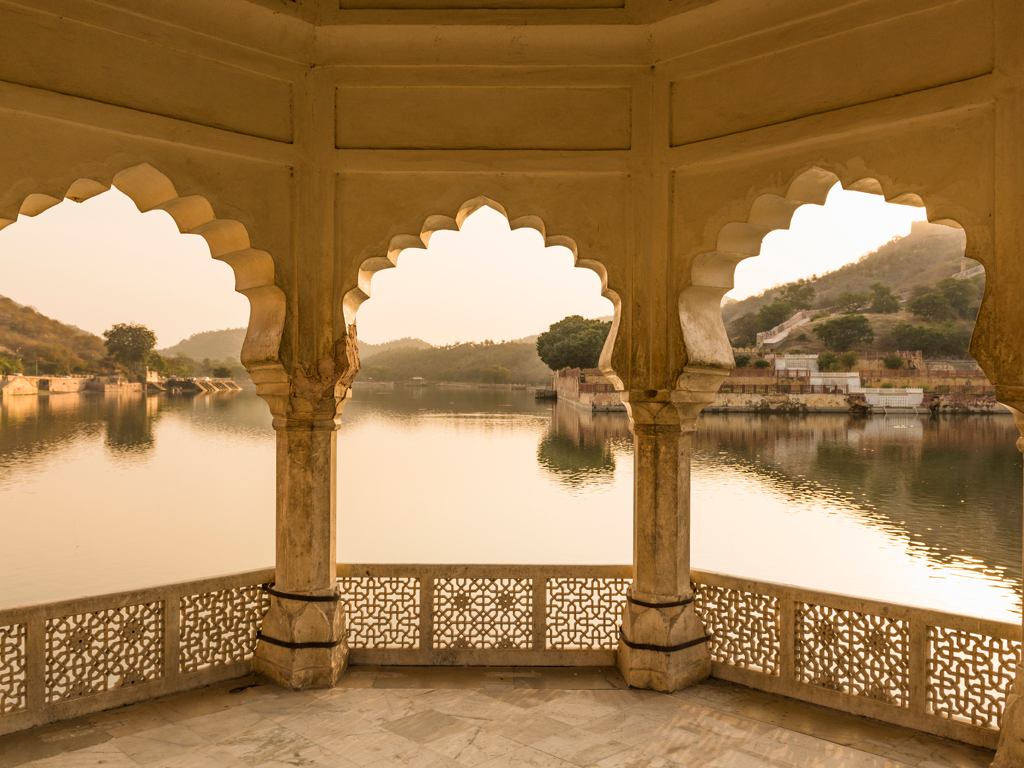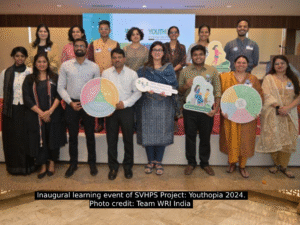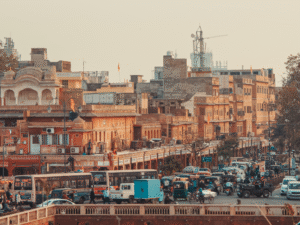Listening to Lived Realities
Through my fieldwork in Jaipur’s neighbourhoods, I’ve spent time speaking with adolescent girls about their experiences in public spaces. These conversations have stayed with me – not just because of what they said, but how familiar their struggles felt across different parts of the city. The following diary-style entries are drawn from stories shared during these interactions. They offer a glimpse into what it means to move through a city that often overlooks their needs. Their words remind me why safety, visibility, and belonging must be at the heart of public space design.
Diary Entry #1: Meera, 15, Mansarovar
4:30 pm
I wanted to meet my friend at the park after extra classes, but the pathway lights kept flickering off. We tried to sit on the swings, but they were chained shut. My parents had warned me not to go alone. I waited by the park gate, trying not to look stranded, until my brother finished work and picked me up.
“If the park felt safe, I could walk there myself, study under the lamp posts, and not always depend on someone else.”
What the Numbers Say:
A 2020 YouGov survey revealed that 52% of urban Indian women feel unsafe walking alone at night, highlighting how inadequate lighting and poorly maintained facilities create real barriers to women’s independence.
Diary Entry #2: Anjali, 17, Vaishali Nagar
7:30 pm
After tuition, I usually wait at the community bus stop. Last week, a group of boys mocked me for sitting alone. Now I rush to a more crowded stop two blocks away—even though it means I miss dinner with my family. I see young men hanging out freely at the original stop, but somehow it feels unsafe for me.
“Why does my presence feel like a problem? If there were security or even a woman conductor, I’d feel less vulnerable.”
What the Numbers Say:
A 2019 report by The Indian Express highlighted that Rajasthan recorded over 52,000 crimes against women, marking a significant increase of nearly 50% compared to the previous year. This surge underscores the urgent need for safer and more inclusive public spaces to protect women and girls in the state.
Diary Entry #3: Rani, 16, Jagatpura Outskirts
6:00 pm
The ground by my colony was supposed to reopen this week after repairs, but the fence is still up. My brother plays football on the dusty road instead—but I can’t join him there; our parents won’t allow it. I ended up walking home alone, skirting dark alleys because the main street lamps were off.
“A simple announcement about reopening times, a level field, and a few women-led evening groups—nothing fancy, but it would make it safe for me to play too.”
What the Numbers Say:
In 2021, Rajasthan reported 40,738 cases of crimes against women, ranking second in India. Notably, the state recorded the highest number of rape cases for the third consecutive year. These figures underscore the persistent safety challenges women face in public spaces across the state.
Lessons from Their Voices
Experiences shared by adolescent girls across Jaipur reveal that issues like broken lights, locked gates, and harassing bystanders don’t impact everyone equally. In Jaipur’s social context, these everyday urban flaws amplify women’s private fears – forcing them to rely on men, avoid public amenities, or accept longer, circuitous journeys. The common thread is clear: when public spaces lack basic safety features and inclusive programming, women and girls bear the brunt, curtailing their autonomy and sense of belonging.
When public spaces are planned without considering gender and age, they silently send the message: “This city isn’t for you.”
Reflecting on What Comes Next
These diary entries must move beyond storytelling to reshape how we envision Jaipur’s public realm. Recognising that gender norms and design oversights combine to limit half the city’s population is the first step. Any future interventions—whether flickering streetlights or fenced-off grounds—must center women’s lived experiences, ensuring that safety, visibility, and inclusion are built into the very blueprint of public space. Only then can Jaipur become a city where every resident, regardless of gender, navigates its streets and parks with confidence rather than fear.


